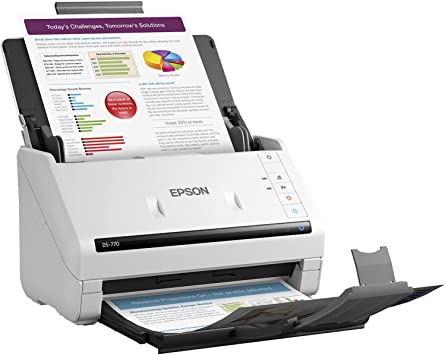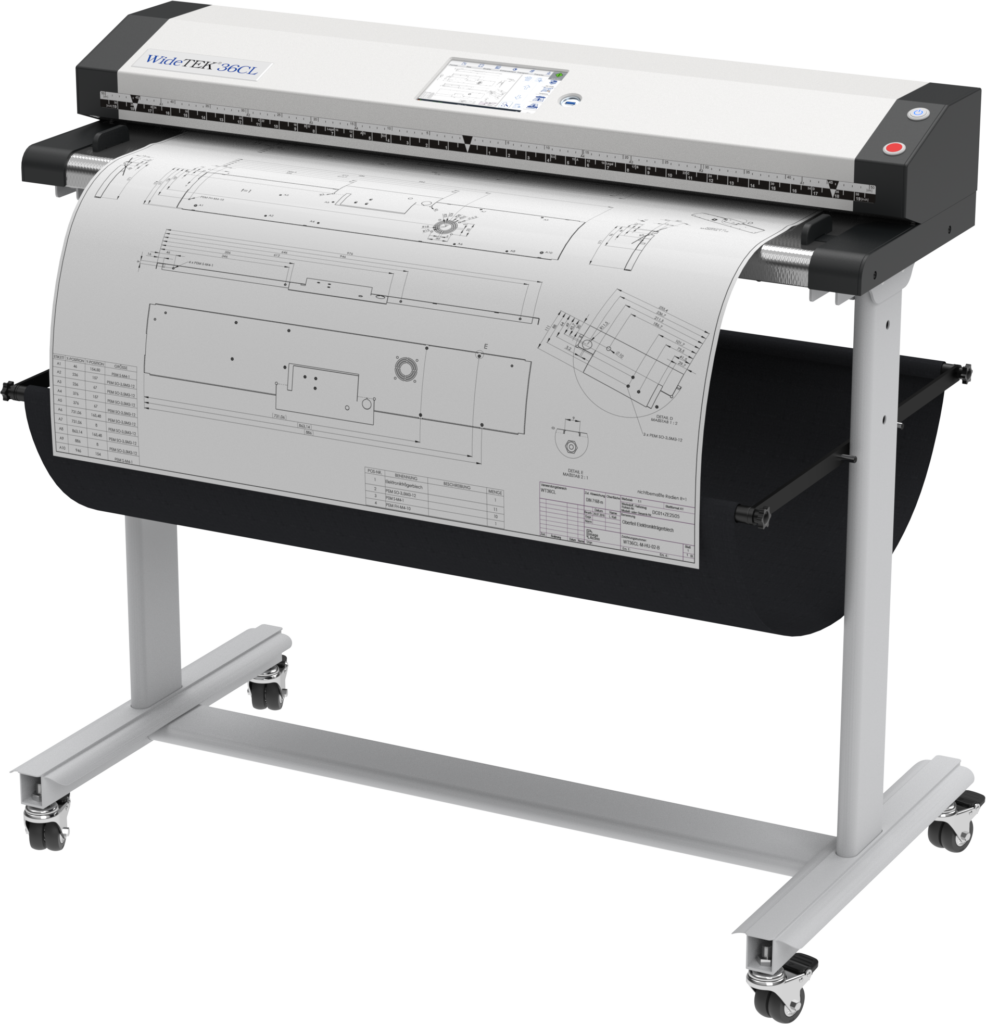Document Scanning FAQs
So you’re interested in document scanning, but you don’t know where to start. Here are our answers to some of the most commonly asked questions about document scanning services, including everything from why they’re important, to what concrete options are available for getting your documents scanned.
Contents
- What is Document Scanning?
- Why Should You Scan Your Documents?
- What Document Scanning Options are Available?
- Are Scanned Documents Legally Valid?
- What are the Requirements for Legally Valid Digital Files?
- How Safe is Document Scanning?
- What can I use to Scan My Own Documents?
- Which Document Scanner is Best?
- Where can I go to Scan My Documents?
- What is “OCR,” and How is it Involved in Document Scanning?
- Where can I Store My Documents?
What is Document Scanning?
Before we talk about Document Scanning, we of course have to define what we’re talking about. Document Scanning is the process of turning paper documents into digital files using specialized equipment. Because it turns physical information into digital information, it is a type of digitization.
While this technically includes things like photocopying one or two pages at a time, “document scanning” is typically used to refer to bulk scanning operations involving thousands or even hundreds of thousands of pages, scanned rapidly by specialized equipment in very specific procedures.
Why Should You Scan Your Documents?
There are many ways in which scanning your documents can beneficial (see our blog on the top 5 reasons for more details), but the primary benefits stem from the advantages that digital technology has over physical formats.
By scanning your documents, you’re bringing your information into a new world of functionality and utility, including instant sharing and remote access to files, high-speed analysis and visualization tools, and massively increased storage capacity. Some other reasons include better preservation, better security, and even better legal reliability.
What Document Scanning Options are Available?
Though the basic process is simple in concept, the actual practice of scanning your paper files can vary widely.
For a very small batch of non-sensitive files, walk-in scanning at your local Staples or UPS Store will do the trick.
Outsourced Scanning
For larger batches or files which require strict confidentiality, you’re almost certainly better off outsourcing the scanning process to the experts.
You and your team are probably more than capable of learning all of the necessary procedures and legislation and finding the right equipment for the job, all on your own. But it’s often cheaper, more efficient, and more reliable to let a firm that specializes in scanning handle the job for you.
Why take time and energy away from your core business to focus on scanning, when you could outsource the task to a firm whose core business is scanning?
Skip to “Where Can I Go to Scan My Documents?” or “Where Can I Store My Documents?”
In-House Scanning
Sometimes, however, unique circumstances like extremely delicate documents or great distances make in-house scanning your best option. If you find yourself in this position, it’s best to hire a scanning professional with experience administering similar projects or to consult with one when running your own project.
As we mentioned earlier, the basic concept of document scanning is simple; but it can get a lot more complicated in practice. The various legislations about the legitimate digitization of legal records make some amount of research a necessary part of any scanning operation. The larger a project is and the more steps are involved, the more opportunities there are for inefficient practices and policies to slip in, costing you time and money.
A scanning project expert will understand the relevant legislation and how it affects your project, as well as how best to optimize the scanning process for speed and efficiency.
Skip to “What Can I Use to Scan my Own Documents?” or “Which Document Scanner is the Best?”
Are scanned documents legally valid?
Though there is a common misconception that paper files or other similar physical formats are more legally reliable than digital documents, in fact, digital files can be far more legally reliable than paper.
Most digital formats automatically collect information about who interacted with a file, what they did to it, and when. Add to that password protections and restricted access, as well as protected formats like PDF-A, and you’re looking at multiple layers of accountability and security that paper files simply can’t compete with.
If you ever have to defend the legitimacy of your records, do you want the court to have to trust your word that those paper files are what you say they are, or would you prefer to have extensive metadata to back you up?
Of course, not every digital file is automatically more legally valid than a physical document, merely because it is digital. The suite of metadata and security options only available with digital formats is what gives files more legal reliability. There are also certain requirements that must be met in order to make your digital files legal copies, but we’ll discuss those in the next question.
What are the Requirements for Legally Valid Digital Files?
Files which were originally created digitally and have been tracked and kept in protected formats already have the capacity to serve as legally legitimate records. But scanning an existing, legally valid, physical document does not automatically produce a legally legitimate digital copy.
According to the Canadian General Standards Board (CGSB), a digitization process must meet the following requirements for the products to be considered legitimate (source: CAN/CGSB-72.34-2017 6.4.2.2):
- Excellent Image Quality: the images of your files you produce must be “sufficiently high-quality…so that the digital substitute will serve ongoing business needs as well as unanticipated future requirements.”
- Don’t Re-digitize: If you’ve got a file in a physical format that used to be digital, you need to try getting ahold of the original digital copy instead, before you re-digitize it.
- Triple Quality Assurance: The CGSB guidelines state that “[a]t minimum, quality controls shall be set at the document preparation stage, at scanning and indexing, and at the bulk upload stage,” (6.4.2.2; emphasis added). That’s three separate double-checks to make sure that the digital file is a complete and accurate copy. If you find a digital file that’s too low-quality to replace the physical original, it needs to be rescanned.
- Everything Accounted For: every physical file and digital copy involved needs to be accounted for throughout the process in accurate and comprehensive lists or inventories. It’s best to create these inventories at the start of the scanning process and update them as the process is completed. That way, problems or rescans can be accounted for as they happen, and the entire inventory can be presented to auditors as soon as the project is finished. You also need to have accurate records of the specific procedure used, so that auditors can make sure you took all the appropriate steps.
Note: the way that the legislation is written, every organization is obligated to understand what the legislation requires of it, even if they outsource. In fact, you’re required to take whatever rules are imposed on you by the legislation, and impose those on your service provider by including them as conditions in the service contract.
How Safe is Document Scanning?
In any scanning project, there is a very small amount of risk that your documents, either the physical originals or the digital copies, will be damaged or lost. Some scanning machines pull pages through narrow spaces with rotors, which can sometimes jam, possibly resulting in tearing or creasing. Sometimes technical problems can corrupt digital files, or human error can result in skipped documents.
In general, however, document scanning is very safe. If you choose a reputable service provider, outsourced document scanning means trusting your files to the care of document-handling experts with a financial incentive to keep your files as safe as possible. To be extra safe, ask your service provider to walk you through their process and security measures, and, if possible, get in touch with some of their past clients to ask if they ran into any problems.
Doing it yourself will mean learning or developing all of those safety policies and procedures before you begin, which can be a hassle, but a manageable hassle. Most of these policies are common sense anyway, like not allowing unsealed drink containers near the stacks of physical files, and keeping comprehensive accounting of each file.
What can I Use to Scan My Own Documents?
There are hundreds of specific scanning machines available on the market, but they all fit into a few general categories based on their purpose and function:

- Sheetfed Scanners: Ideal for processing large batches of paper quickly, sheetfed scanners pull pages through one at a time from a hopper that can hold large stacks. This efficiency comes at a price, however, as sheetfed scanners are typically more expensive than simpler, slower flatbed scanners; prices range from $400-$2,400. If you’ve got a large number of documents to scan (e.g. >10,000 pages), or need to digitize an ongoing stream of new documents as they’re created, then it may be worth it to invest in this kind of high-efficiency equipment.

- Flatbed Scanners: Though they are slower and less efficient than sheetfed scanners, flatbed scanners are simpler to use and set up. While sheetfed scanners typically come with complicated software and procedures to operate, most flatbed scanners function more or less the same as a photocopier on your standard office printer. With prices ranging from $80-$700 at most, they’re a good option for smaller projects, and teams with little scanning experience.

- Oversize Scanners: As large, specialized pieces of equipment, it probably won’t be surprising to learn that oversize scanners are the most expensive variety, with prices starting at $4,000 and only going up from there. You only need an oversize scanner if your documents are large format (>20″) diagrams, blueprints, or maps; certain sheetfed or flatbed scanner models can accommodate non-standard page sizes like legal (8.5″ x 14″) or tabloid (11″ x 17″). The size of the documents also means that oversize scanning is the most accident-prone, as larger documents have more opportunity and leverage to jam, fold, or tear as they go through the scanner. If you need large format documents scanned and there’s nothing preventing you from transporting them to an external service provider, we strongly recommend you trust them to experts before trying it yourself.
Which Document Scanner is the Best?
There are many different models of scanning machines available. Here’s a comparison by PC Magazine of a dozen excellent choices, updated in early October 2022.
Whatever you choose, make sure that the format, functionality, price, and reliability match your needs and your budget. A small project without an urgent deadline does not require the same top-of-the-line equipment that a larger project might. An expensive, high-quality machine will be a waste of money if your employees aren’t trained to use it properly. On the other hand, trying to scan hundreds of thousands of pages with the cheapest scanner you could find online probably won’t go very well either.
Where can I go to Scan My Documents?
There are many document service providers here in Alberta, so you’ll need to weigh the pros and cons of each. Factors like reputation, security measures, and flexibility all need to be taken into account when making your choice.
The provider’s distance from you is also critically important, as longer travel times mean a greater risk of damage or loss during transit. Watch out for franchised companies that set up small offices in every major city, as some will pick up your files at their local office and then ship them across the country just to scan them. When discussing with a potential service provider, make sure you know where the files will actually be scanned.
Consentia has been providing scalable scanning solutions to organizations in Alberta for decades, and our experienced team has worked on every type size of project. Clients’ files are always scanned in our Edmonton service bureau, under multiple layers of physical and digital security, and only ever handled by our trusted and vetted employees. We undergo third-party security audits annually to verify that we meet or exceed all safety and security standards.
Get in touch with us today to request a quote or ask any questions you may have. Our experts would be happy to work with you to develop a custom solution that meets your specific needs and budget constraints.
What is “OCR”, and How is it Involved in Document Scanning?
OCR stands for “Optical Character Recognition” and refers to a wide variety of text-recognition technologies. Modern OCR systems range from ubiquitous to cutting-edge, with greater complexity and higher prices correlating with a greater capacity to recognize diverse inputs, including hand-written text and unstandardized forms.
OCR is used in document scanning to automatically recognize and note letters in images, giving you the ability to search for specific words, highlight, and copy and paste the text. Without OCR, scanning would basically leave you with images of your physical files, not equivalent digital text files.
Consentia offers OCR as an option in all of our scanning projects, giving you either the ability to search through your files with ease, or the choice to save your money instead. We’re also able to arrange for automated data entry and AP processing through our sister company, Contexture. This gives you the option to turn unorganized invoices and other non-standardized forms into neatly organized spreadsheets automatically, saving your accounting department a huge amount of time.
Where can I Store My Documents?
There are a number of storage options in Alberta, most of which are predictably located in Edmonton and Calgary. There are a few key factors to consider when choosing a storage provider, like their reputation, their reviews, their capacity, their responsiveness when corresponding with you, etc.
One of the most important factors to consider is the distance of the facility from you. The further you are from your storage location the greater the delays will be when you need to retrieve physical documents, and longer travel times mean more opportunity for a tragic accident.
If you’re looking to store your information, and not necessarily the documents it’s currently in, then you really should consider the advantages of digital storage. Not only does digital storage give you access to a whole suite of security and utility features that aren’t possible with paper, but the storage efficiency of digital is exponentially better than paper’s.
Expanding your storage is also far cheaper with digital, both in terms of space and money, so if you’re expecting your organization to grow, digital storage is a more sustainable option.
Why waste money on long-term physical storage when you could invest in instantly and remotely accessible secure digital storage with practically limitless storage capacity?
If digital storage sounds like a good long-term solution, but you have a large number of physical files that need to be stored somewhere urgently, then storing them with Consentia is probably your best option. We can store all of your files in our highly secure facility, and gradually scan them while they’re under our care. That way you can solve both the short-term problem of storage capacity and the long-term problem of an outdated storage medium, with just one solution.
